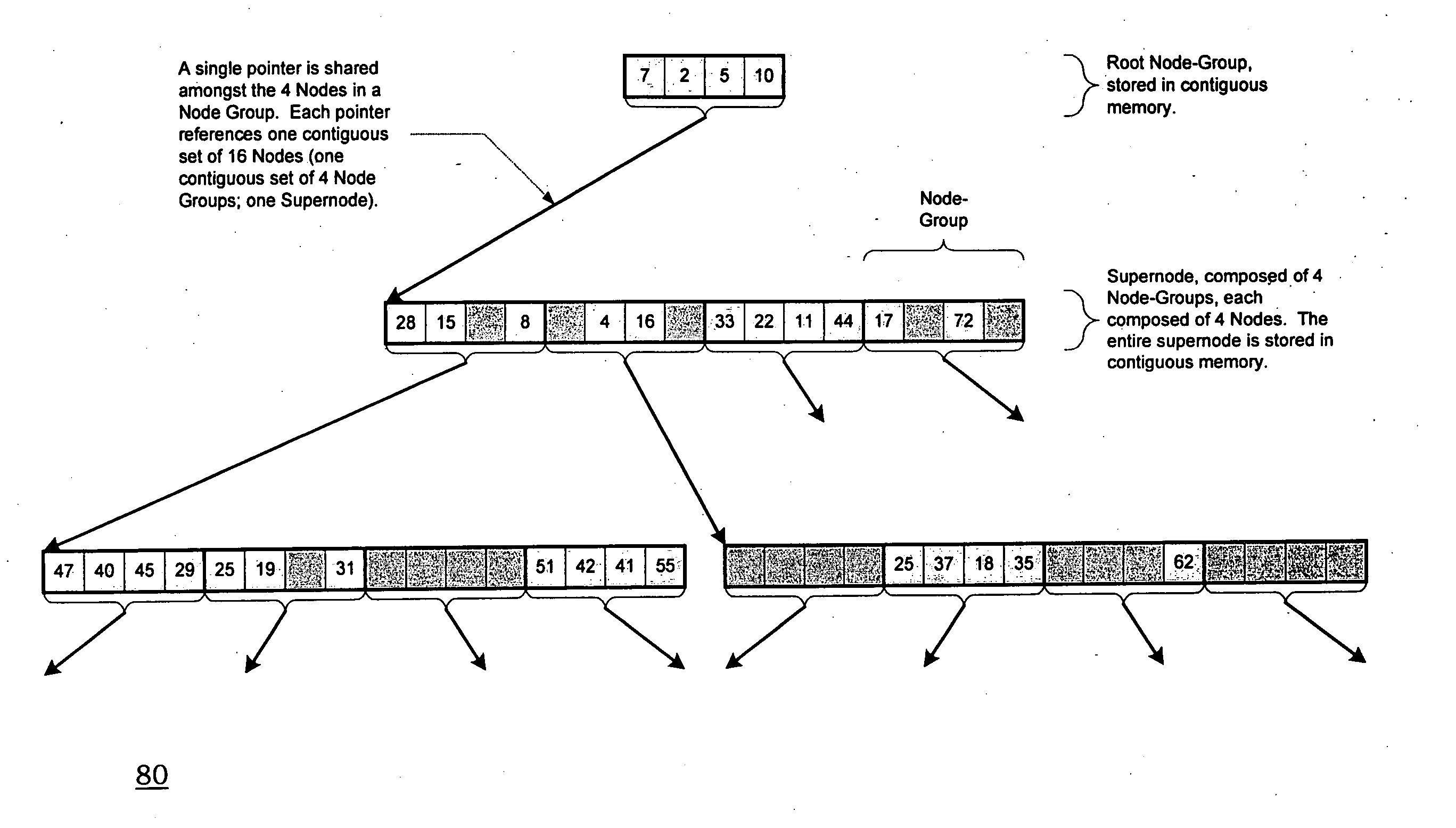Data structure and method for sorting using heap-supernodes
a data structure and heap technology, applied in the field of sorting techniques and architectures, can solve the problems of inefficiency and difficulty in parallelization and pipelining of heap algorithms, inability to implement efficient pipelined heaps, and difficulty in building efficient pipelines that support a mix of the two operations, so as to reduce the number of memory read accesses and increase throughput
- Summary
- Abstract
- Description
- Claims
- Application Information
AI Technical Summary
Benefits of technology
Problems solved by technology
Method used
Image
Examples
Embodiment Construction
)
[0068] Several aspects of piles are described below, which include heap remove operation, heap insert operation, combining an array implementation and a pointer implementation, a supernode structure, hole counters, multiple memory systems to construct a pipelined implementation of a heap-like data structure, multiple comparators to construct a pipelined heap implementation, and a pipelined heap with random commands, and a level cache to increase pipelined heaps processing. [0069] 1. Alteration of the heap remove operation, such that a hole may be percolated down the heap, with each hole behaving as the lowest priority value in the heap, and such that the hole may reside in any leaf position of the heap. The term leaf position applies equally well to an array-based implementation of a heap. [0070] 2. Alteration of the heap insert operation, such that the percolate operation operates on the heap data structure in a top-down rather than a bottom-up fashion, and such that the path foll...
PUM
 Login to View More
Login to View More Abstract
Description
Claims
Application Information
 Login to View More
Login to View More - R&D
- Intellectual Property
- Life Sciences
- Materials
- Tech Scout
- Unparalleled Data Quality
- Higher Quality Content
- 60% Fewer Hallucinations
Browse by: Latest US Patents, China's latest patents, Technical Efficacy Thesaurus, Application Domain, Technology Topic, Popular Technical Reports.
© 2025 PatSnap. All rights reserved.Legal|Privacy policy|Modern Slavery Act Transparency Statement|Sitemap|About US| Contact US: help@patsnap.com



